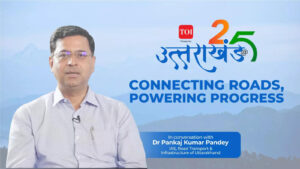Mahashivratri: Awakening Shiv Within – The Times of India

Chants of ‘Har Har Mahadev’ fill the air during Shivratri celebrations. However, Shivratri is not meant to be celebrated externally; the night of Shiv is intended for spiritual union with nirakar, nirgun Brahmn. The opening sutra of Shiv Sutras of Kashmir Shaivism is ‘Chaitanyam Atma’, meaning atman becoming aware of Itself. Shivratri signifies union of atman with the Self and is observed with meditation, prayers, and fasting, focusing on introspection and devotion.
Everything is a manifestation of divine consciousness. However, avidya and ignorance create bondage. Our belief in a separate self becomes the root of our suffering. Simply realising ‘I am Shiv’ dissolves all limitations. By resting in awareness beyond dual nature of existence, one realises true nature of Shiv.
Tantra promotes direct experience of the Divine through internal communion. Shiv is everywhere, transcending notions of purity and impurity. Shankar, the manifest form of incorporeal Shiv dancing in the shamshan, cremation ground, is one of Tantra and Shaivism‘s most profound and esoteric symbols. It represents dance of destruction and creation, the ultimate reality beyond life and death. This is tandav, cosmic dance symbolising dissolution and illusion, liberating the soul, and revealing eternal truth of existence.
In Tantra, shamshan is not just a place of death but transformation. In his manifest form, Shankar accepts everything—he consumes poison, bhang, and even suffering. Shankar drank the poison that emerged during Samudra Manthan, which turned him blue, signifying his infinite capacity to transform negativity. Vijnan Bhairav Tantra is an ancient Shaiva Tantra text structured as a dialogue between Shankar and Parvati. The text emphasises vijnan, direct experience of Bhairav, formless supreme consciousness.
Festivals such as Diwali and Holi are widely celebrated with joyous gatherings, social interactions, and outward displays of happiness. They mark victory, abundance, and community bonding. However, Mahashivratri is observed with meditation, prayers, and fasting, focusing on introspection and devotion. It is a night when devotees seek Shiv’s blessings to remove negative energies and attain wisdom. The festival commemorates the removal of inner darkness—ignorance, ego, and desires—and the dawn of spiritual enlightenment. This spiritual renewal paves the way for a new world order.
Shiv is also worshipped as ‘Sarveshwar,’ the Lord of deities. Unlike deities with a physical or subtle body, Shiv is incorporeal. Jyotirlingam temples underline Shiv’s nirakar (formless) nature.
Shiv is called ‘Ajanma’, meaning the One who is never born, and ‘Mrityunjay,’ the immortal One. He is said to be the one without parents, so the word ‘Shambu’, short for ‘Swayambhu’—the self-existent, the One who cannot be created—is suffixed to his name. He always remains ‘Karmatit’, beyond karmic accounts, and ‘Sadamukt’, eternally liberated from the cycle of birth and death, granting mukti, liberation and Jivan Mukti, liberation while alive, to all.
Almighty Shiv awakens us to our true identity—we are human souls, not mere material bodies. He reminds us of our relationship with Him, father of all souls. Through the celebration of Shivratri, we are ushered into transformative and holistic change. Mahashivratri marks beginning of a spiritual process of renewal and renaissance.
Authored by: ST Team








